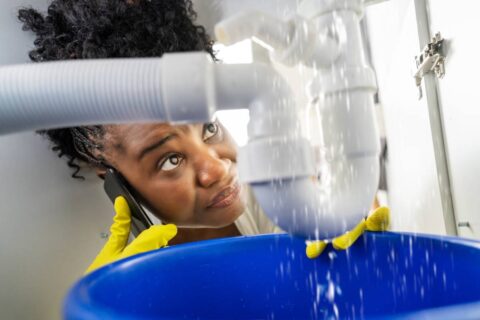Can Your Pipes Freeze?
Although it’s rare in sunny Los Angeles, every property owner should know that it is completely possible for your pipes to freeze. Uninsulated pipes that run through uninsulated areas are especially vulnerable, as outdoor temperatures are easily able to affect the physical state of the water chilling in your pipes. If you’re unfamiliar with frozen pipes, this may seem relatively innocent, but you’re probably forgetting that water expands when it freezes. So can your pipes freeze?
Can Your Pipes Freeze?
The reality is that a frozen pipe is often only moments away from bursting under pressure exerted by the ice within. Therefore, preventing your pipes from freezing isn’t just about ensuring you have access to clean water on demand. It’s about preventing serious, costly damage to your property. With that in mind, here are a few ways you can prevent your pipes from freezing during the occasional, chilly day, and what to do when your prevention fails.
If you have experienced frozen pipes, go ahead and call our emergency plumbing services. Having trouble with pipes during colder times can be a serious inconvenience. New Generation Plumbing is your best choice for local plumbing help.
Insulate Wherever Possible
If you’re worried about your pipes potentially freezing, then it may be worth your time to schedule an appointment with a licensed plumber from New Generation Plumbing. Ask them to give your plumbing a once over to help identify any serious flaws. At this time, you can also ask which pipes are most vulnerable to a sudden drop in temperature.
Whether they’re in your basement, just outside your home, in your attic, or in your garage, it is a really good idea to add insulation, especially if you live in a colder region. Foam insulation is perfectly fine. You can even find thick sheets of insulation that can be wrapped around exterior pipes and secured with zip-ties for extra protection.
Leave a Drip Going
Historically, it really doesn’t get cold enough in the Los Angeles area for pipes to freeze, but it helps to know what to do when temperatures do drop. Whether we get a freak storm or you’re simply enjoying some time in the mountains, look out for reports that temperatures are going to reach 20 degrees Fahrenheit. At 20 degrees or lower, there is a relatively high probability that pipes will begin to freeze.
Fortunately, there is a simple step you can take to prevent the catastrophe of a burst pipe. All you have to do is turn on the household sinks on a slow drip. Allowing water to continuously move through the pipe, even at a slow pace, can help to counteract the effects of the weather.
Maintain a Steady Temperature
When temperatures are threatening to drop, you want your home to maintain a comfortable level of heat to protect your pipes. You can do this by keeping your garage and other doorways closed. You should also set your environmental controls to keep your home at 55 degrees Fahrenheit or higher. By keeping heat in, your home will keep your pipes warm. Even outdoor pipes that are close to the home will benefit as your home radiates heat outwards.
When Prevention Fails
Despite all of the measures we take, there will be times when your pipes freeze if you live in a colder climate. Fortunately, you can usually thaw out frozen pipes by allowing small amounts of water to flow through or applying heating pads to the affected pipes. You do have to be careful to check for damage before thawing pipes, as melting the frozen pipes could lead to a sudden burst of water if the pipe is already broken.
If you do find even the tiniest crack in the affected pipe, then you should immediately call an emergency plumber. They will be able to safely thaw your pipes and immediately take care of any issues that result from that process, giving you the security that you need.

